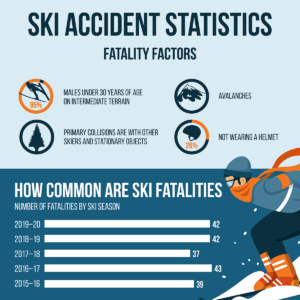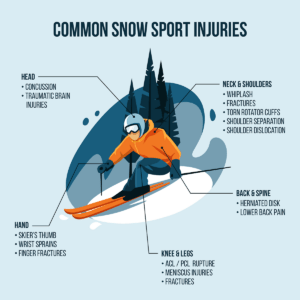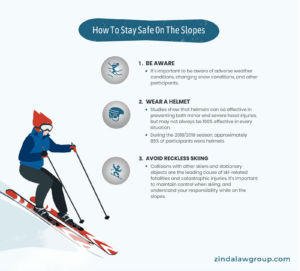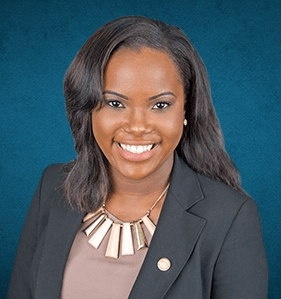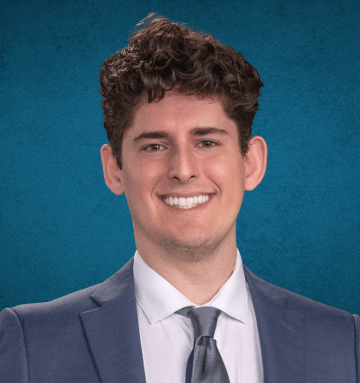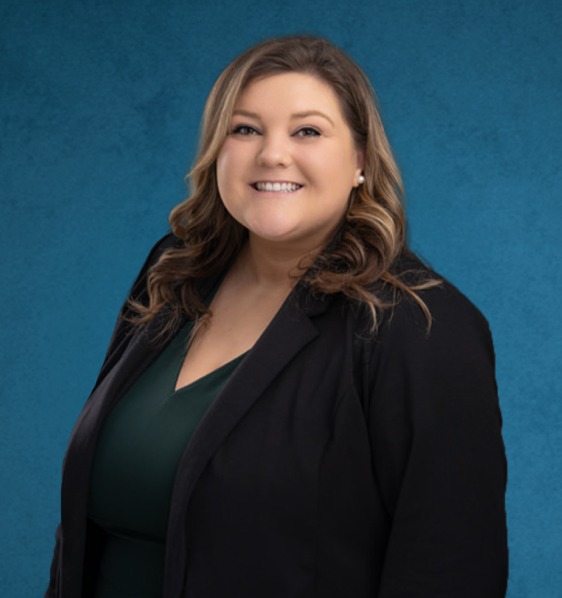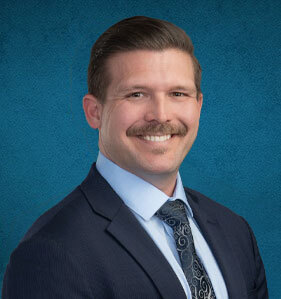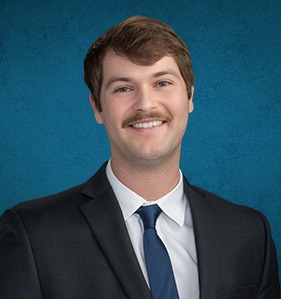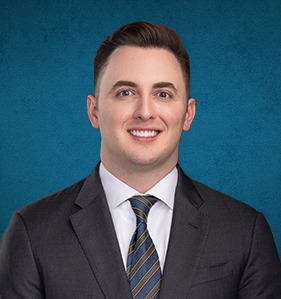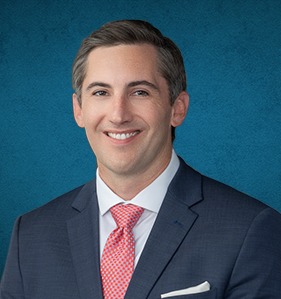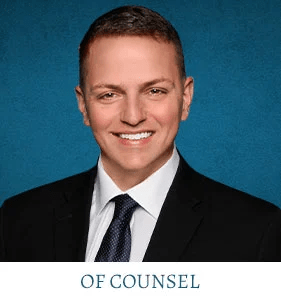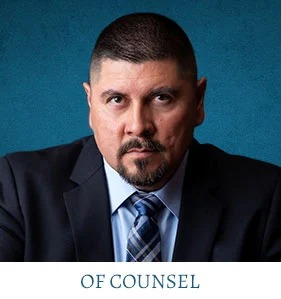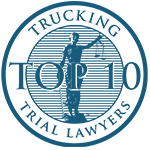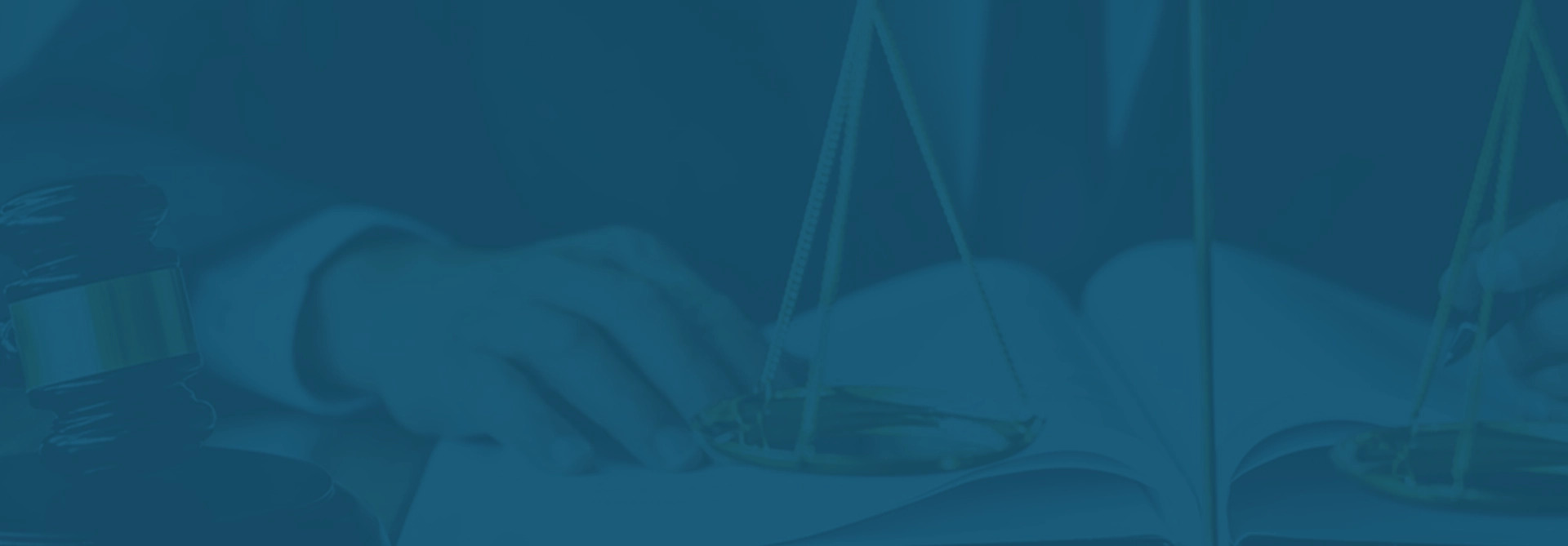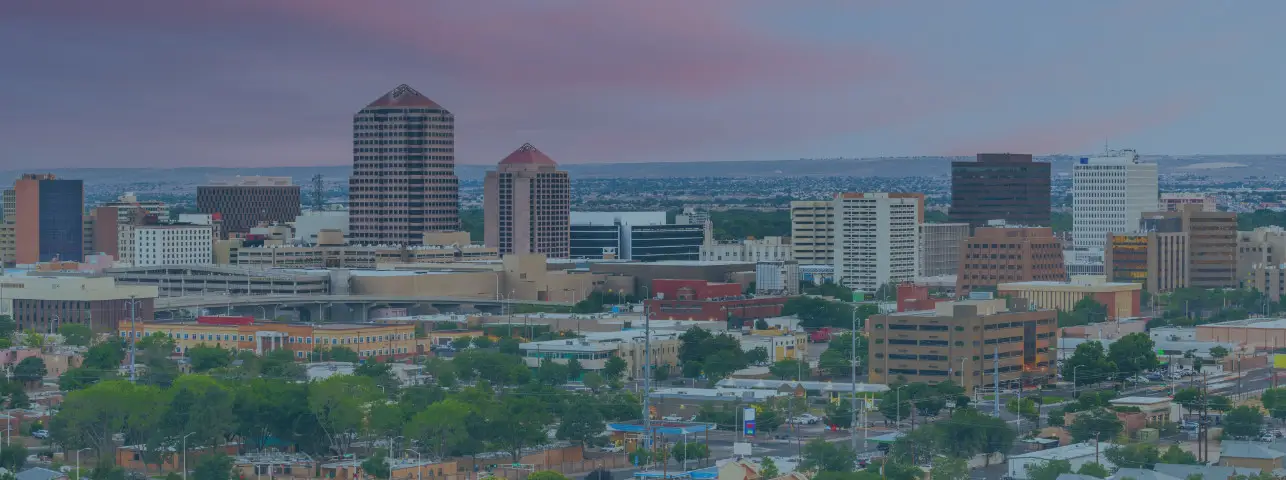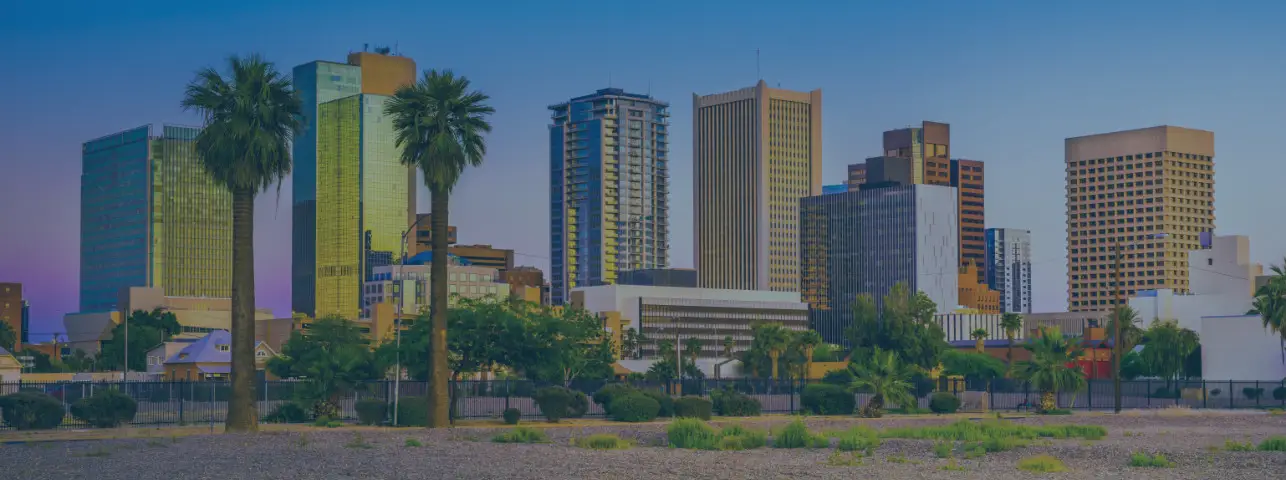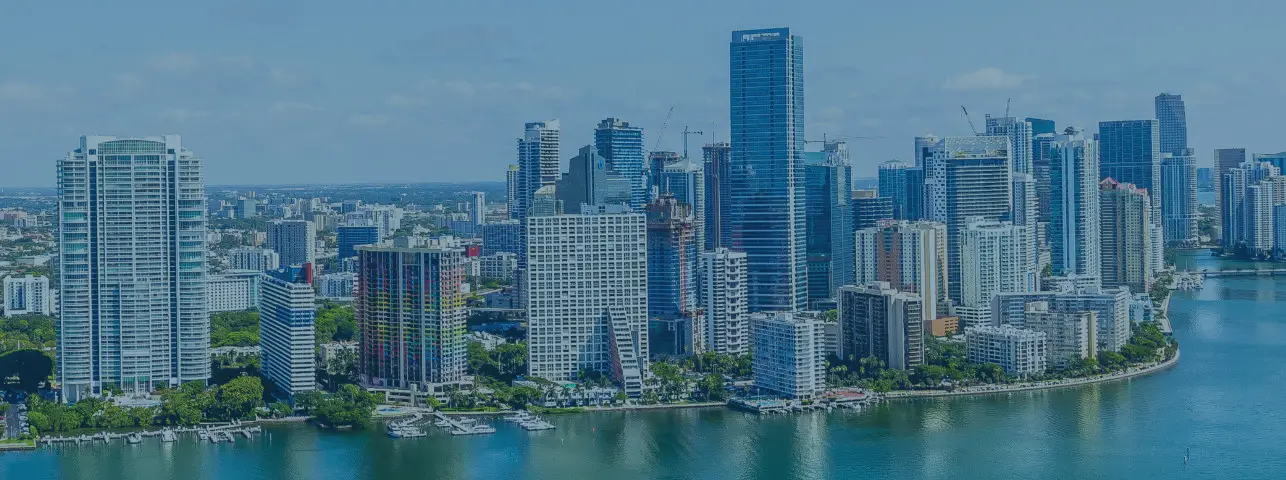Call (800) 863-5312 to Speak with Our Attorneys
Skiing and snowboarding are some of the most popular wintertime activities in mountain towns across the United States. This is for good reason—skiing and snowboarding give families time to get out in the open air and speed down mountains in beautiful locations, all while getting a great workout. However, for some, a day on the slopes can end in tragedy. Many accidents will result in slight bumps and bruises, but some can result in far worse injuries.
Injuries requiring a hospital visit can leave you and your family in a very stressful situation, whether it’s physically, emotionally, or financially. Luckily, though, you don’t need to go through this stressful experience alone. The accident attorneys at Zinda Law Group can provide legal help for all sorts of ski collision or ski resort accidents and are standing by to help guide you through.
If you or a loved one has been injured in a ski or snowboarding accident, contact Zinda Law Group at (800) 863-5312 for a free consultation with one of our experienced personal injury attorneys. As our client, you will not owe us anything unless we win your case. Free Consults24/7
COMMON SKI & SNOWBOARD ACCIDENTS
As mentioned before, skiing and snowboarding are very popular winter activities. In fact, researchers at Johns Hopkins University concluded that around 10,000,000 people participate each year. However, the dark side of our love for the snow is that around 600,000 injuries are reported annually.
The accidents that cause these injuries can be divided into a few categories. First, accidents between a skier and another skier or snowboarder is perhaps the most common. In addition, skiers and snowboarders, especially those who are inexperienced, run the risk of colliding with a tree or lift pole.
Sometimes, accidents can be the result of the resort itself, however. If you rented your equipment and it fails on you due to some malfunction or defect that should have been corrected, the resort may be liable for your injuries. Similarly, your accident could have been caused by a faulty chairlift or poor teaching from an instructor.
Chairlift Injuries
The lifts and machinery used at ski slopes are usually safe when properly managed and maintained. However, this is not always the case. Some people suffer injuries when lifts malfunction, when someone uses the lift improperly, or when the victim’s injuries are caused by contact with other machinery. Resorts should only hire trained professionals to operate machinery and should routinely check it for defects. If you’ve been injured in an accident that involved ski lifts or machinery, call our ski accident attorneys to learn more.
Ski vs. Snowboard Accidents: Which Injuries Happen More Often?
According to the National Ski Areas Association, snowboarders are 50-70% more likely to get injured on the slopes but are about 30% less likely to be killed compared to skiers. Additionally, most skiing deaths occur after collisions with fixed objects where someone is moving at a very high rate of speed. Snowboarders also suffer more wrist, shoulder, and ankle injuries.
Common Ski Accident Injuries
In the same way, there are a few injuries that accident victims Knee injuries are very common. In addition, because skiers will often put out their arms in an attempt to break their fall, shoulder injuries, like dislocations or fractures, are very common as well. Snowboarding and skiing accidents also result in a fair amount of head and brain injuries. Collisions with another skier or object, as well as contact with the ground in a fall, can deal substantial blows to the head and lead to concussions or other types of traumatic brain injuries.
What Should I do After a Snowboarding or Skiing Accident?
While skiing and snowboarding are meant to be fun pastimes, accidents happen. A snowboarding or skiing accident can be very traumatic and leave you wondering what to do next. To keep yourself safe and safeguard your potential claim, it is important to follow a few key steps:
1. Seek Medical Attention
After snowboarding or skiing accidents, ski patrol will likely be on hand to triage the situation and offer assistance. Still, you should seek medical attention immediately after a snowboarding or skiing accident. Even if you don’t think you’ve been hurt, certain injuries may not appear until later, and talking to a doctor can help mitigate any issues. Also, seeking medical attention quickly may help prevent another party from proving that injuries aren’t severe or related to the accident.
2. Document the Snowboarding or Skiing Accident
After any sort of accident, it’s important to gather as much information as possible. You’re probably wondering how to gather this information, which must be done quickly in order to keep a proper record of the accident
- Write down the location of the accident.
- Take as many pictures as possible of the location, any injuries, and your surroundings. Be sure to document any important signs as well.
- Get the contact information and address of the person or people involved in the crash with you.
- Flag down any witnesses and obtain their personal contact information, as you may need their statements later on.
As you’ve probably heard before, a picture is worth 1,000 words, especially after a ski or snowboarding accident. Any evidence you obtain could help immensely in a claim for damages, so remember to document the scene thoroughly.
3. Contact a Team of Ski & Snowboard Injury Lawyers at a Personal Injury Law Firm
When it comes to seeking compensation for your injuries, the legal process can be rather complex and somewhat terrifying. Having an experienced ski accident lawyer on your side may mean the difference between receiving enough money to get you and your family through a difficult time and receiving nothing.
“Skiers that have been involved in an accident on the slopes should call us because, one, they’re hurt, and two, they usually have no idea where to start,” said Joe Caputo, partner and ski accident lawyer at Zinda Law Group. “Not only do you need to investigate how this happened, who’s responsible, and make sure that that’s dotted and crossed, but we also have to do some digging to find out if the person who hurt you has the right type of insurance that’s going to provide the right type of coverage.”
Speaking with an experienced attorney at a personal injury law firm soon after your accident makes it easier to pursue maximum compensation and see meaningful results.
Ski Laws
The exact laws that will govern your case differ from state to state. Below is a summary of some of the similarities and differences between a few different jurisdictions.
Who is at fault in snowboarding or skiing accidents?
Generally, skiers and snowboarders have a duty to stay in control and avoid other people or objects. In fact, people ahead of you have the right of way, so they must be avoided. Given the duty of care every skier assumes when out on the slopes, an injured person may pursue a claim against individual skier rather than the resort itself.
Learn More: Who’s at Fault in Skier vs. Skier Accidents?
Texas
While there aren’t many ski mountains in Texas, Texans love to travel throughout the United States to find some of the best skiing available. We’ve represented many Texans dealing with ski accidents that occurred out of state.
Learn More: Texas Ski Accident Lawyers
Colorado
A lot of the applicable law in the state of Colorado comes from the Ski Safety Act (SSA), which was passed in 1979. One of the things that the SSA did was to establish that skiing is an inherently dangerous sport, and that skiers assumer some of those risks of skiing accidents. However, this does not mean that you have signed away all of your rights when you strap on your boots. Negligent ski area operators can still be held liable for injuries if they negligently caused them. Colorado skiing law also establishes that skiers must ski within their ability and pay attention to those around them. Uphill skiers owe a particular duty to downhill skiers as well because they have a better line of vision.
Learn More: Colorado Ski and Snowboard Accident Lawyers
New Mexico
The law in New Mexico is similar to the law in Colorado. They even have a similarly titled law—the New Mexico Ski Safety Act. This law imposes similar duties on the individual skiers, and also establishes the requirements that operators carry insurance and warn visitors of certain risks and dangers when it comes to skiing accidents.
Learn More: New Mexico Ski and Snowboard Accident Lawyers
Arizona
People from outside of the Grand Canyon State may assume that it is entirely desert, but Arizona is actually home to a few different ski areas. The relevant statute in the state states that skier accept the risk of changing snow conditions, which could be important in a warmer state where snow melts more quickly. However, it also outlines similar duties for skiers to watch out for other skiers and for resort owners to maintain their facilities in a safe and responsible way.
Learn More: Arizona Ski and Snowboard Accident Lawyers
California
For skiers in California, it is important to understand that it is against the law to enter closed areas—skiers must stay on marked slopes. In addition, California imposes a requirement similar to automobile accidents in which it is against the law for a skier to leave the scene of an accident that they were involved in.
Wisconsin
Wisconsin’s law sets forth the general requirements that skiers pay attention to those around them and follow all of the posted signage. However, interestingly, Wisconsin included a special provision in their law that ski patrol members are immune from liability unless they were acting recklessly or intentionally.
Michigan
Michigan’s Ski Safety Act is actually the oldest of its kind in the country. It establishes that skiers and ski area operators both have certain duties to fulfill, and that skiing activity is subject to the oversight of a ski safety board.
New York
It is important for skiers in New York to understand that the applicable law mandates that they read the “Warning to Skiers” section on their tickets. In addition, skiers need to make careful decisions, taking into account their level of expertise as to how they should ski and on what slopes.
HOW DOES A SKI ACCIDENT CASE WORK?
In a situation where another skier ran into you, the case will likely come down to whether that skier can be held liable for your injuries. Skiers owe a duty of care to other people on the slopes, and as mentioned before, uphill skiers owe a particular duty to downhill skiers. If the skier who collided into you was skiing negligently, whether it be out of control or above their skill level, they may be liable for your injuries. Interestingly, injuries resulting from injuries on the slopes are often covered by homeowner’s insurance policies.
What is the Cause of Action in a Ski Accident Case?
Negligence is the most common cause of action in personal injury cases, including skier injury cases. Individuals must exercise reasonable care in their actions to ensure no harm. For example, the law imposes a duty to exercise caution when driving a roadway motor vehicle or a snowmobile. In the skiing context, the meaning of “reasonable care” is largely defined by the Ski Safety Act. Showing that another party is liable for negligence requires proving:
1. A legal duty was owed by the defendant to the plaintiff.
2. The defendant breached that duty.
3. The plaintiff suffered an injury.
4. The plaintiff’s injury was caused by the defendant’s breach.
Suing the Ski Resort
Ski resorts, though they are excused from some liability by statute, can still be liable for injuries in certain cases. For example, if they negligently failed to mark dangerous spots or if they rented you faulty ski equipment without bothering to check to make sure that it was safe, then it is possible that they could be held liable. These sorts of cases can be difficult due to the fact that skiers assume certain risks of skiing, but resorts are not immune from liability in the event of a skier injury.
Learn More:
Filing a Claim
Typically, an injured ski accident victim would consult with an injury lawyer file a claim against the negligent party’s homeowner or renter insurance policy. The Ski Safety Act prescribes a statute of limitations for ski accidents, which creates a time limit for a claim for compensation to be filed. In Colorado, the statute of limitations for ski accidents is two years. After this period, you cannot file a case seeking compensation. Once the two-year countdown begins (date of the snowboarder or skier injury), speak with an attorney as soon as possible so that they have plenty of time to preserve your claim and prepare your case.
SKI ACCIDENT COMPENSATION
Skiing and snowboarding accident compensation can be difficult to calculate from the outset of a skiing personal injury claim, but it does follow some basic principles. Compensation is typically made up of economic and non-economic damages. Economic damages are things like medical bills, lost wages from being unable to work, and damage to personal property. Non-economic damages include the pain and suffering that you experience as a result of your injuries, and this can be both physical and emotional suffering.
Learn More: How to Calculate the Value of Case
GET HELP FROM THE SNOWBOARD AND SKI ACCIDENT ATTORNEYS AT ZINDA LAW GROUP
Zinda Law Group has offices across the country to be able to provide you with the resources of a large firm while at the same time providing you with the individualized attention of a local office. In addition, we believe that an accident victim shouldn’t have to worry about their ability to afford legal representation, which is why we use a no-win, no-fee policy—you don’t pay your injury lawyer anything unless we win your case.
If you or a loved one has been injured in a ski or snowboarding accident, contact the ski accident lawyers of Zinda Law Group at (800) 863-5312 for a free case evaluation.
Free case evaluations with attorneys by appointment only.
Additional Links:
- Texas Ski Accident Lawyers
- Colorado Ski Accident Lawyers
- Arizona Ski Accident Lawyers
- New Mexico Ski Accident Lawyers


